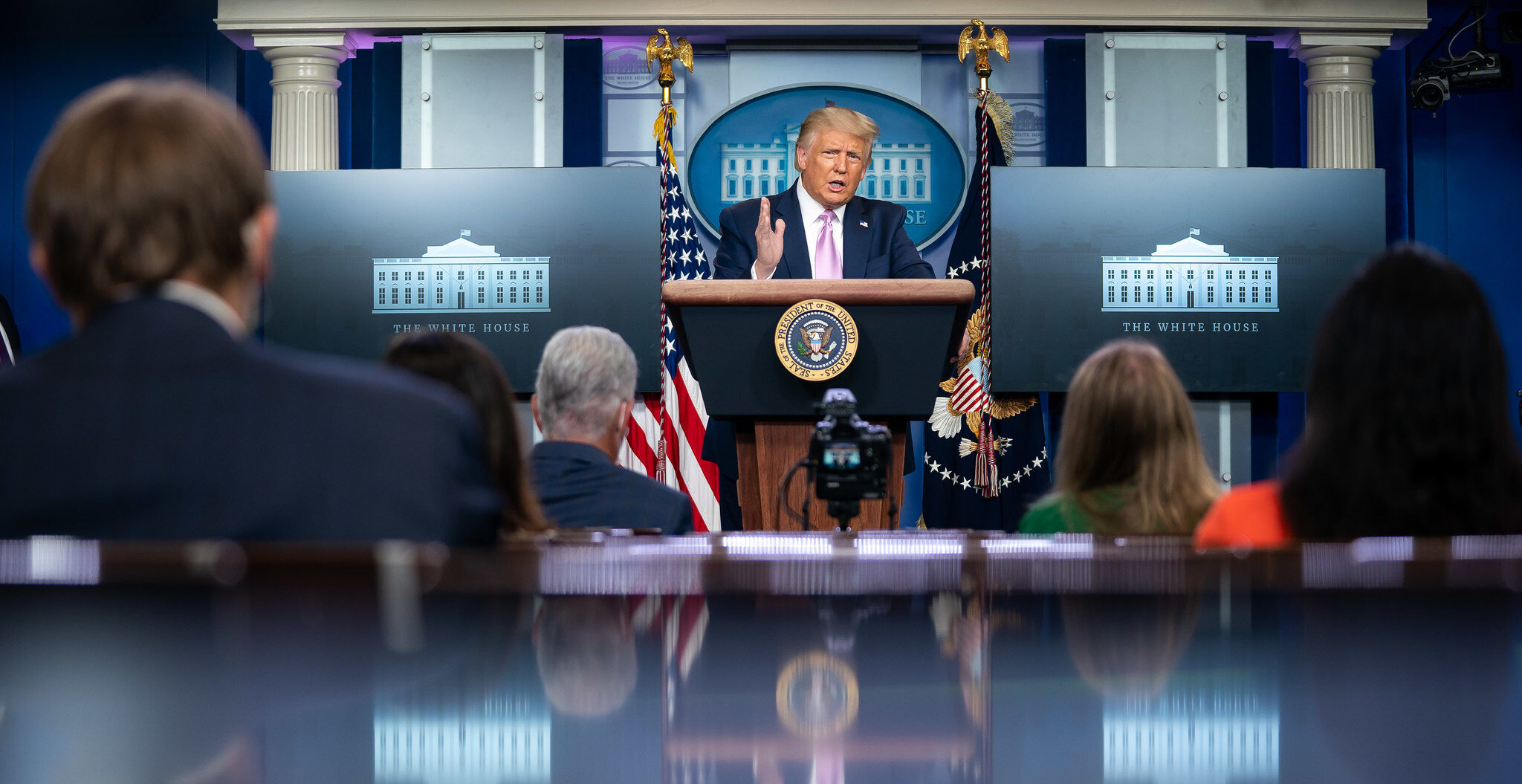
The White House briefing room, as it currently operates, is emblematic of the dysfunctionality of the relationship between the press and the presidency. But simply filling it with podcasters, bloggers, and right-leaning influencers—while tempting as a quick solution to counter the left-leaning media dominance—is insufficient.
Wholesale reform of the White House Correspondents’ Association (WHCA), the briefing room’s purpose, its physical location, and the process by which access is granted is essential to achieving a lasting reset in the relationship between the executive branch and the media. Without structural changes, any gains made by inserting conservative voices into the mix will be ephemeral, reverting to the status quo the moment power shifts back to the left.
The WHCA is a protectionist racket that exists not to serve the American people but to guard the privileges of an insular group of media elites. Its current system ensures that legacy outlets like CNN, CBS, and the New York Times dominate the narrative while newer or alternative voices struggle to gain entry or visibility.
This entrenched hierarchy has led to the briefing room being used less as a platform for holding power accountable and more as a stage for self-aggrandizement and careerism. Reporters jockey for viral moments trade in “gotcha” questions, and prioritize their social media metrics over substantive inquiry. It’s no wonder the American public has lost trust in the media, with polling consistently showing deep skepticism toward the press’s ability to report fairly and accurately.
Replacing left-leaning personalities with right-leaning ones, while superficially satisfying, risks perpetuating the same performative behavior. The problem isn’t just who occupies the briefing room—it’s how the room is structured and what it incentivizes. Without reform, right-leaning media figures could fall into the trap of mimicking their predecessors, seeking viral clips and social media clout rather than fostering meaningful dialogue. Conservatives should not aspire to mirror the behaviors of legacy media; they should seize the opportunity to fundamentally reimagine the relationship between the president and the press.
A key reform would involve razing the current press briefing room altogether. Its proximity to the West Wing encourages a transactional relationship between the press and the administration, one that breeds favoritism and cronyism. Transforming that space into something more productive—such as a working office for White House staff—would symbolize a break with the old paradigm. Press briefings could be relocated to the Eisenhower Executive Office Building (EEOB), establishing a clear boundary between the business of governing and the spectacle of media engagement.
Moving the briefing room to the EEOB would also help enforce the separation of powers in practice, not just in theory. The press, while vital to democracy, is not entitled to unfettered access to the inner workings of the executive branch. Relocating the briefings sends a clear message: the press serves the people by reporting on the presidency, not by trying to exert influence over it. This change would also create logistical barriers to the kind of casual cronyism that has long defined the WHCA’s gatekeeping, as proximity would no longer be an implicit reward for loyalty or narrative alignment.
In tandem with a new location, access to press briefings should be overhauled. Entry should be merit-based, emphasizing journalistic integrity and the ability to ask substantive, informed questions. This could be achieved through a rotating system that prioritizes outlets based on their demonstrated commitment to accountability and factual reporting rather than their size, profitability, or proximity to political power. Smaller outlets, citizen journalists, and independent media should have a fair shot at participation, ensuring that the briefing room isn’t dominated by corporate media giants or clickbait-driven outlets.
Finally, the purpose of press briefings needs to be reevaluated. Instead of serving as a stage for grandstanding and sound bites, briefings should return to their original function: providing information to the public through the media. This would require a cultural shift within the administration and the press corps alike, emphasizing clarity, transparency, and a focus on substance over spectacle. Press secretaries should not be political combatants, but facilitators of information, and reporters should be held to a higher standard of professionalism.
Without these structural reforms, any attempt to diversify the ideological makeup of the press corps risks becoming a superficial exercise. Conservatives should not settle for merely shifting the bias of the room; they should use this moment to fundamentally reset how the press interacts with the presidency.
By dismantling the WHCA’s monopoly, relocating the press briefings, and prioritizing merit over media clout, a more equitable and effective system can be built—one that serves the people rather than entrenched interests.
If the right fails to seize this opportunity, the left will simply reinstate the old system at the first opportunity, cementing the briefing room’s role as a tool of partisan narrative control. The goal should not be to win the current game but to change the rules entirely.

